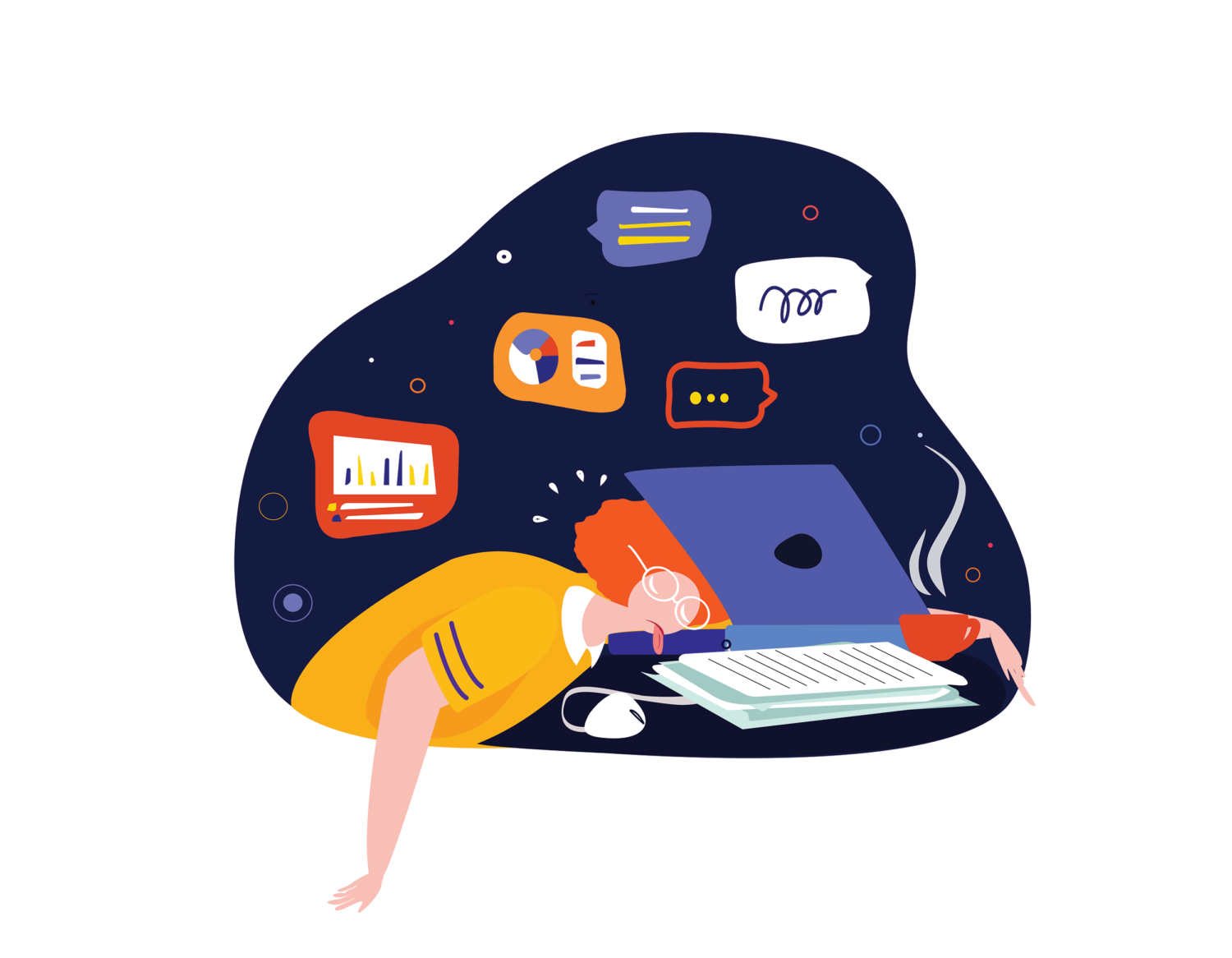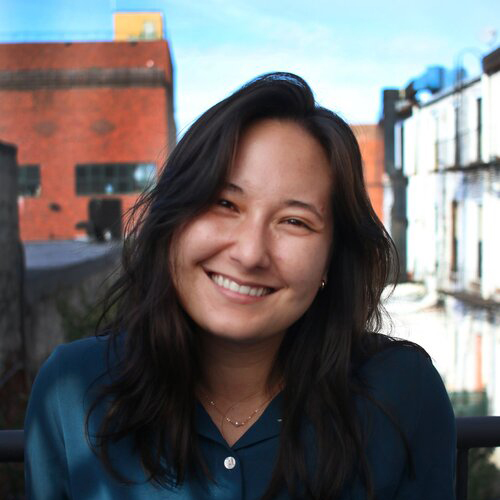This column originally appeared in The Cohort, Poynter’s newsletter that centers conversations about gender in media. Subscribe here to join the community.
Last year during the Olympics, workplace messaging platform Slack ran an ad that featured its signature “knock brush” notification sound. Every time it played, it triggered panic in viewers, myself included.
Over the last decade — and especially the last two years — Slack and other digital communication and productivity tools have become the infrastructure around which our knowledge economy workplaces are built. They’ve made it easier to work quickly and on distributed teams, but they’ve also brought work into our personal phones, into our living rooms, and into our beds.
Hearing an unexpected knock brush when I’m in a leisure context is powerful enough to uncover deeply buried Pavlovian panic responses. Now, the Olympics are back and so are the ads, and they’re stressing people out.
In his book, “A World Without Email,” Cal Newport argues that the asynchronous digital tools so many of us have built our professional lives around — primarily Slack and email — promised to make us more efficient but have done the opposite. Conversations that might have taken 15 minutes in person or on the phone now stretch across hours of back and forth. Each notification pulls workers out of their concentration (or “deep work,” a term popularized by Newport in a previous book); they can’t ignore a notification for fear of missing out on an important message.
Newport is interested in how to get the most out of workers in a finite amount of time. But I keep thinking about that moment of interruption, the sinking in your chest when you hear the knock brush, the way you drop everything to see what’s needed of you lest you appear absent. I wondered whether it was possible to envision a future for journalism that didn’t include constant presence on Slack.
Early in the pandemic, we thought that working remotely would be good for people of various needs, who would now be able to show up in their own ways. Without the unpredictability of offices, especially open office plans, workers have more control over potentially distracting environmental variables. They have more flexibility with how they plan their days and, in theory, can step away from work for periods to be there for loved ones when needed.
The Slack notification, though, has ballooned in significance. It’s often the primary tie that workers have to their workplaces, and so every notification accordingly takes on a greater weight.
When I worked in an office, I’d leave for lunch, sometimes for 45 minutes. If I didn’t leave the office, I made a point to try and eat lunch away from my desk. I spent a fair amount of time going on walks with colleagues. And some of my favorite memories from office life were the Friday afternoons when everyone got the sillies and sat around chatting.
All of that changed in March 2020. At first, I couldn’t leave my desk because we didn’t know how COVID-19 spread and it was scary to go outside at all. I went weeks without leaving my apartment except for a furtive, masked, daily run.
But as we settled into a new routine and it became clear that this work-from-home thing was here to stay for a while, I noticed something: I still didn’t leave the house. Not only did I not leave the house, but when I left my desk for even a few minutes, I started to itch with anxiety about what I might be missing on Slack or email. This wasn’t the result of any top-down guidance that told us we shouldn’t take breaks. In fact, we were encouraged to take breaks, to walk around the block, to do whatever we needed to stay sane.
Still, a culture sprang up in which people accounted for their locations at all times, with the assumption that unless otherwise noted, we were immersed in deep work.
The negative implications of this always-available culture are clear for people whose homes may have more distractions than others: Parents and caregivers often need to divide their time at home in ways that look different from non-caregivers. Neurodivergent people experience a barrage of notifications vastly differently than the neurotypical do. For workers with the most normative circumstances, those who work from home are working more than ever. All of these factors, combined with political instability and the anxiety of the pandemic, amount to mental health damage that could last a generation.
Sometimes, when I got especially overwhelmed, I would post a note to the company’s Slack saying I was closing the app to focus on a project. I relished those quiet hours. But they always ended. Slack was the office, after all, and I had to return eventually.
Newport encourages his readers to envision workplaces that aren’t so reliant on what he calls “the hyperactive hive mind.” Based on my experiences closing Slack, I’m all for it. But I don’t know that it’s possible in the version of the journalism industry we have now.
If the knowledge work world is always on, the journalism world is always, always on. Journalists take pride in starting early and staying late, in devoting themselves to their careers. Journalism isn’t a job, they say — it’s a calling. Whether you buy it or not, those beliefs underpin the way our work culture is structured. The more power and money you have, the more flexibility you have to opt out. When you’re younger, newer to the industry, lowest paid in the newsroom or from a marginalized background, you’re stuck dancing the productivity dance to prove your worth.
When I hear the knock brush, I’m transported to the tiny bedroom I rented in D.C. the year after I graduated college. I was a social media manager for a small political magazine and I often stayed up late at night to wait for Hill reporters to file breaking stories. It was imperative that I stay online so I could tweet the stories from the magazine’s account as soon as they went live — how else would we show how competitive we were with other D.C. publications? Never mind that their staffs were often several times bigger and also had more than one social media producer.
I’m an early bird, so staying up late has never come naturally, and I also live with chronic fatigue. As I’ve gotten older, I’ve learned ways to structure my life to accommodate my fatigue, including fairly rigid sleep routines and rest built into my day, so I can show up to my commitments and relationships. I didn’t know these things when I was 22, though. All I knew was that the stress and physical strain of always being available to tweet and Facebook the next story was exhausting me, and my body was breaking down.
My association with the knock brush is lying in my Ikea bed as the clock crept toward and past midnight, and no breaking story had been filed yet, and my managers had all gone home and were offline, and I was still waiting for the story. I felt myself slipping into sleep and I cranked my laptop’s volume as high as it would go so it would wake me up if I fell asleep waiting. The knock brush was there to interrupt my body from what it wanted to do, to thrust me back into working.
There’s a sense that journalists must always be on and ready to respond to breaking news. Of course, that is what we are here to do. But looking back on that first job, I wonder how many readers actually looked to that magazine for breaking news instead of Politico or The Washington Post or The Associated Press or Reuters. It was the magazine’s ambition to compete with those publications, but the cost of that ambition fell unevenly on my shoulders, and on the shoulders of other colleagues who overworked to fill the gap between what our newsroom could accomplish and what was being done by those with many more resources.
I think of my mentees who work in local news, who often go two weeks without a day off because they are the youngest, hungriest reporters in their understaffed newsrooms. It is true that local news coverage is a pillar of democracy. It is also true that corporations are buying up and gutting local newsrooms around the country, and it should not be on the backs of the youngest and the lowest paid in those newsrooms to make up the difference between what was and what is.
We’re about to enter the third year of the pandemic. What are the new rules of Slack? Email me at thecohort@poynter.org to be included in the next issue of The Cohort.







